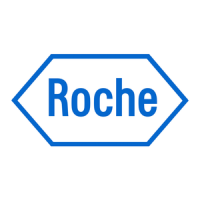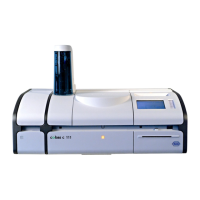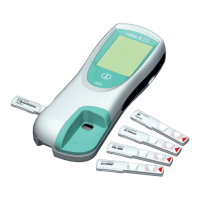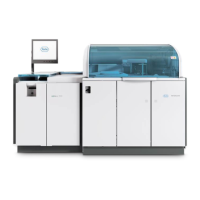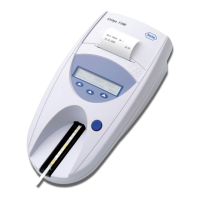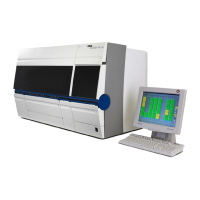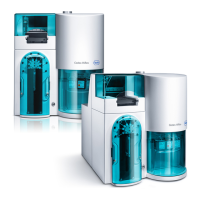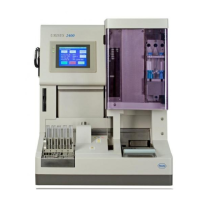1 (1) Record Type ID ST 1 X X Q is fixed.
2 (2) Sequence Number NM 6 X X Indicates sequence No. Normally it is 1.
3 (3) Starting Range ID
Number
CM 55/46 X X Indicates the end of
communication record.
^<SampleID>^<SequenceNo>^
<CarrierNo>^<PositionNo>^^
<SampleType>^
<ContainerType>
<SampleID> Type: ST Max: 22
indicates Sample No. (Sample ID.)
<SequenceNo> Type: NM Max: 4
indicates e411 internal sequence
No.
<CarrierNo> Type: ST Max: 5
indicates carrier No. (Disk/Rack)
<PositionNo> Type: NM Max: 2
indicates position No. in carrier.
<SampleType> Type: ST Max: 7
indicates sample type.
SAMPLE: patients sample, static.
<ContainerType> Type: ST Max: 7
indicates sample cup type.
NORMAL: test tube or sample
cup.
REDUCED: sample cup, only.
Indicates the end of
communication record.
^^<SampleID>^<SequenceNo>
^<CarrierNo>^<PositionNo>^^
<SampleType>^<ContainerType>
<SampleID> Type: ST Max: 22 (*1)
indicates Sample No. (Sample ID.)
<SequenceNo> Type: NM Max: 4
indicates e411 internal sequence
No.
<CarrierNo> Type: ST Max: 5 (*2)
indicates carrier No. (Disk/Rack.)
<PositionNo> Type: NM Max: 2
indicates position No. in carrier.
<SampleType> Type: ST Max: 2
(*3) indicates sample type.
S1: blood serum.
S2: urine.
S5: others.
<ContainerType> Type: ST Max: 7
(*4) indicates only sample cup type
(SC).
SC: test tube or sample cup.
MC: reduced sample volume
4 Ending Range ID
